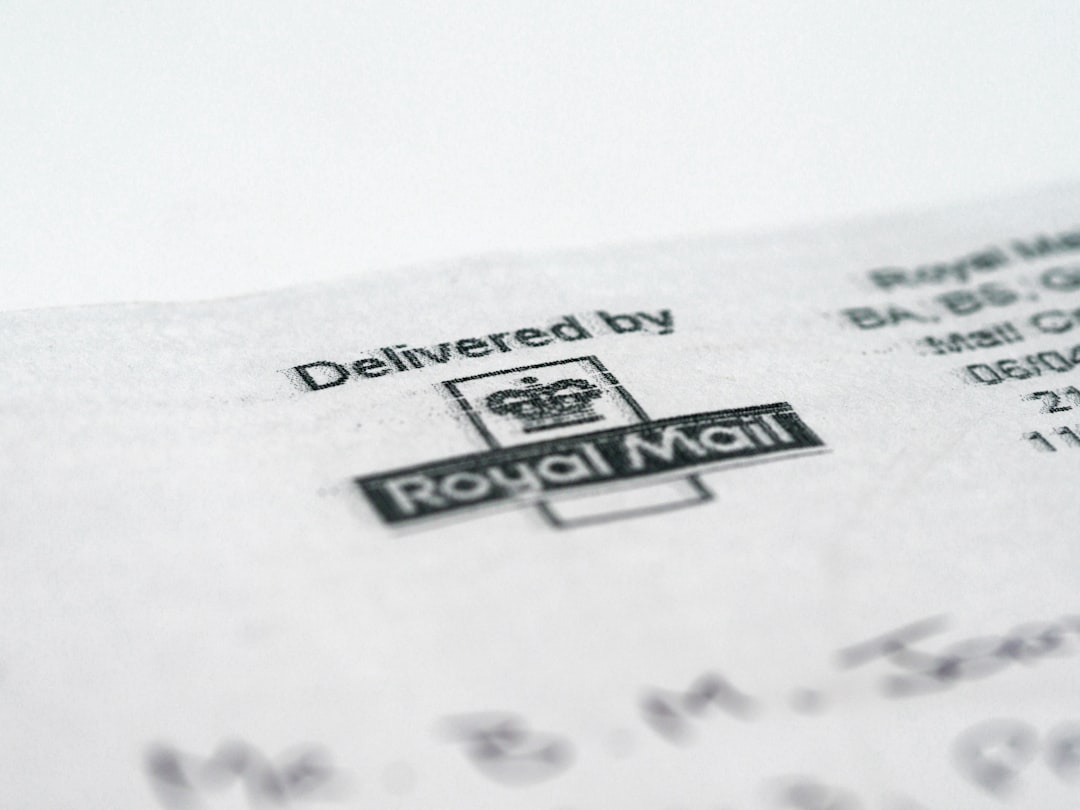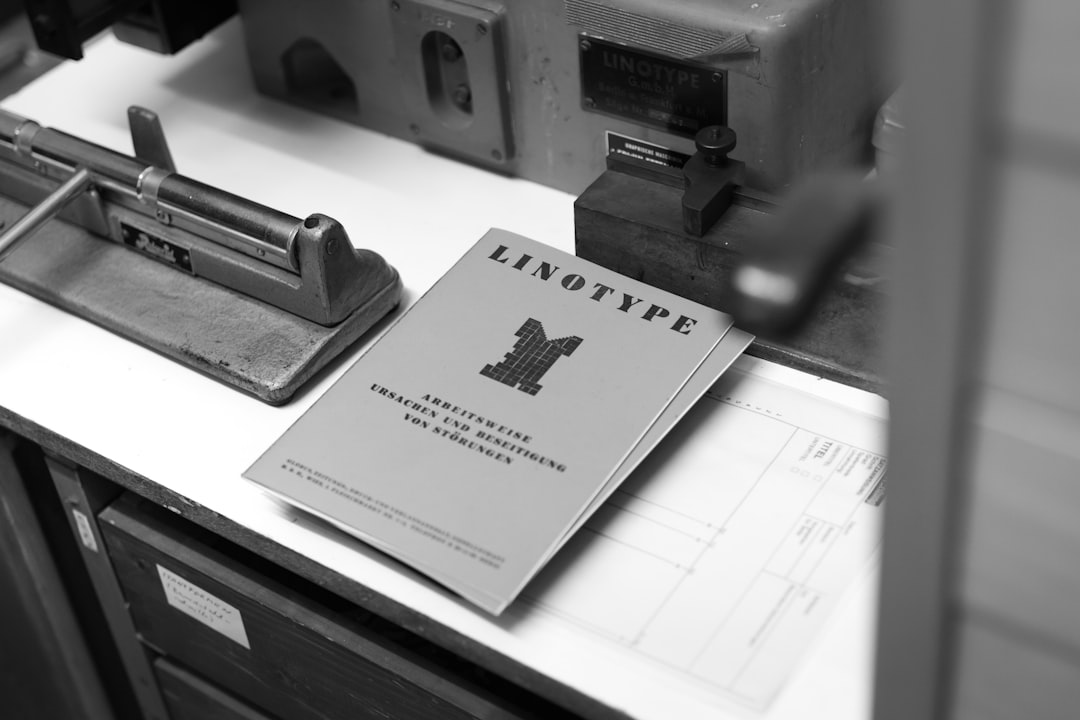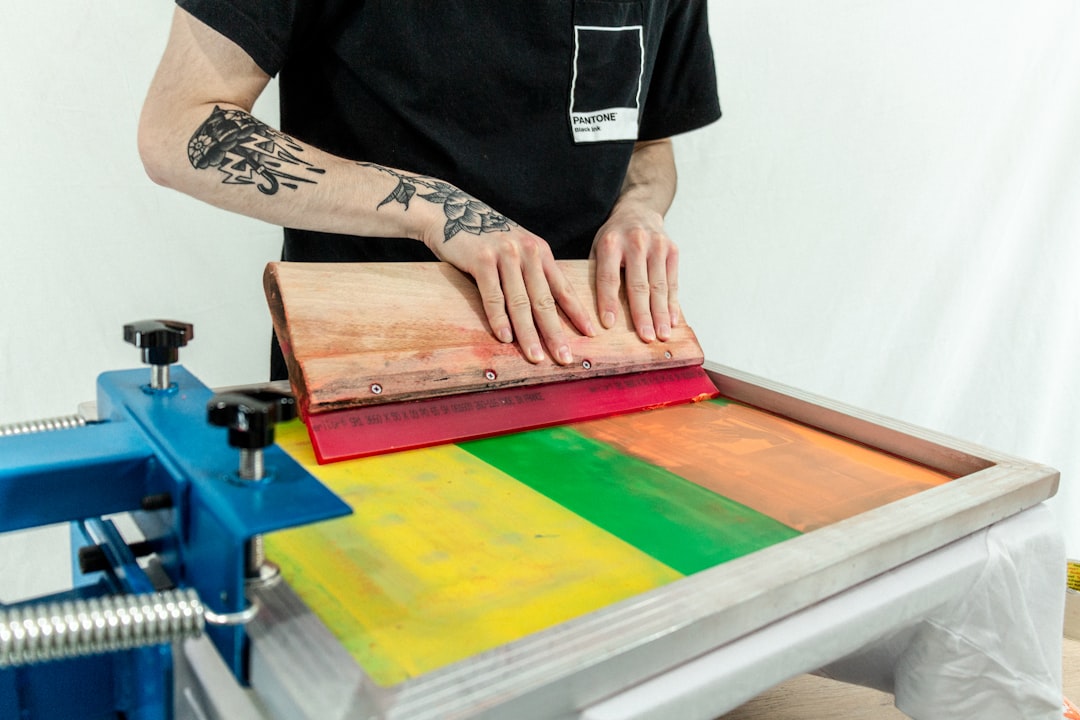

Engage prospects with a scan and streamline customer engagement with FREE QR code marketing tools by Sona – no strings attached!
Create a Free QR CodeFree consultation

No commitment

Engage prospects with a scan and streamline customer engagement with FREE QR code marketing tools by Sona – no strings attached!
Create a Free QR CodeFree consultation

No commitment
In today’s digitally driven world, QR codes have become a powerful bridge between the physical and digital realms. For rotogravure printing services, where the cost of missing high-value prospects or losing touch with anonymous decision-makers is especially acute, these simple codes offer an opportunity to drive real customer engagement directly from printed materials. Whether on packaging or promotional publications, QR codes unlock instant digital actions while giving marketers a clear window into behaviors that traditional print methods leave untracked. See QR marketing for examples.
By strategically embedding QR codes into rotogravure-printed assets, businesses can overcome long-standing challenges such as tracking offline-to-online conversions, optimizing marketing spend, and distinguishing high-quality printing through interactive features. This approach transforms static brochures, wrappers, and unmeasurable outreach into a more scalable, insight-driven channel that captures every moment of buyer intent and enables actionable follow-up before competitors intervene.
As QR adoption accelerates across print, rotogravure printing services have the unique potential to turn every printed surface into an actionable touchpoint. Using these codes modernizes engagement and campaign performance, while also bringing advanced analytics and automation directly into the offline customer journey. This makes every impression count and elevates print to the role of a strategic growth driver.

One of the most persistent challenges in print marketing is the gap between physical interest and digital action. Without a clear way to measure engagement and invite immediate response, intent fades and prospects move on. QR codes directly address this gap by enabling instant engagement, capturing valuable signals before prospects slip away or engage with competitors.
Rotogravure printers operate at scale and deliver premium quality on substrates like films, foils, and coated papers. That scale amplifies the value of even a small improvement in conversion. By embedding dynamic QR codes into packaging, publication inserts, and in-store displays, printers and brands can replace outdated analog processes like paper warranty cards, manual contest entries, and static brochures with scannable, mobile-first paths to action that are fast, measurable, and easy to optimize.
Even small process shifts can pay off quickly. QR-powered surveys transform passive feedback postcards into instant actions that feed CRM and retargeting workflows. QR-enabled sampling or coupon redemption turns anonymous impressions into contacts with clear interests. With a robust platform like Sona QR, every code is tracked, attributed, and actionable, enabling teams to identify high-fit prospects and deploy timely follow-up that moves the needle on revenue.

Rotogravure printing stands out for high quality and long runs across flexible packaging, inserts, and decorative applications. Historically, it has struggled to connect offline exposure with digital engagement. The fundamental pain point is the lack of visibility into who interacts with print, which not only produces untracked leads but also limits efforts to optimize spend or refine creative.
QR codes solve this by turning each printed surface into a direct path to action. As explored in printing QR codes, scanners can register a product, claim an offer, subscribe to a newsletter, or view instructions immediately. Marketers get structured, real-time data that closes the attribution gap. For measurement strategy, see Sona’s blog on offline attribution. Dynamic QR codes also extend the lifespan of printed materials since the destination can be updated without reprinting, which is especially valuable for seasonal promotions, regulatory updates, or inventory changes.
These advantages are especially impactful for rotogravure’s staple substrates: flexible packaging for CPG, premium inserts in magazines or catalogs, and decorative prints for retail or hospitality. Missing even a small percentage of high-intent viewers in these environments can represent significant lost opportunity. QR codes help capture that value in a way that aligns with rotogravure’s quality and volume.

QR codes are adaptable, which makes them a natural fit for the wide range of applications rotogravure serves. The right format depends on your goal and where the code will live. On high-gloss films and metallic foils, quick actions and minimal steps matter, so destinations should be mobile-optimized, fast, and focused.
For packaging and inserts that need to deliver more information, a QR code can route to rich media, long-form documentation, or multi-step flows with progressive profiling. Rotogravure printers can advise brands on format choices based on substrate, audience, and context of use.
Prioritize formats that feed directly into lead nurturing, onboarding, support, or upsell paths. This ensures every rotogravure asset is working toward pipeline growth or retention, not just generating anonymous traffic.

Growth in rotogravure print-driven campaigns is often constrained by limited visibility into what actually works. QR deployment surfaces new opportunities by making each print asset measurable and interactive. Start by looking for high-volume placements where intent is strong and friction to action is currently high.
Then, tailor the call-to-action to the environment. On a pouch or sleeve, focus on instructions, ingredients, or loyalty points. On a magazine insert, emphasize exclusive content, coupons, or early access. On POS materials, highlight instant offers, restock reminders, or membership enrollment. The goal is to make the value of scanning crystal clear in context. For vertical ideas, explore CPG-focused CPG strategies and examples of interactive packaging.
By refining placement and tailoring CTAs to each environment, rotogravure printers and their clients can convert more offline attention into measurable outcomes and revenue.

Rotogravure’s sweet spot is premium quality at scale. When combined with QR strategies, that scale produces a compounding effect: tiny improvements in response translate to large absolute gains. The following use cases map to common workflows and customer interactions in this industry.
Consider how each use case aligns with your business objectives. For acquisition, prioritize registration and coupon redemption. For adoption and retention, emphasize instructions, how-to videos, and support flows. For expansion, use loyalty, reordering, and referral programs.
Each of these turns a passive print asset into an always-on source of actionable data, addressing gaps in measurement, attribution, and segmentation. When tied to CRM and marketing automation, they power timely, personalized follow-up that accelerates the path to revenue.
A frequent frustration in print-led marketing is that high-intent prospects remain anonymous. QR scans change that by signaling who engaged, where, and why. With the right tagging strategy, you can organize scans into powerful segments that fuel precise retargeting, sales outreach, and product-led growth motions.
Think of each QR placement as a sensor. By distributing unique codes across packaging, inserts, POS, and trade ads, you collect behavioral signals that map to funnel stage and interest category. Then, sync those signals to your CRM and ad platforms to trigger sequences that feel personal rather than generic.
Scan intelligence should feed directly into your CRM, DMP, or CDP. With Sona QR, those segments can also sync to Meta and Google ads, allowing you to build lookalikes from high-value segments and automate email or SMS drips the moment someone scans. For paid activation strategy, see Sona’s Playbook intent-driven retargeting. The result is a responsive, data-driven engagement system powered by real behavior rather than guesswork.
QR codes serve as connectors between offline touchpoints and your digital marketing engine. When every printed piece leads to a measurable action and a unified data layer, you can orchestrate consistent experiences across channels and prove the contribution of print to pipeline and revenue.
Rotogravure prints often anchor campaigns that include TV, social, retail displays, and events. By standardizing on QR across these touchpoints, you create a common ID that stitches together engagements and attributes impact. This helps teams coordinate creative, offers, and follow-up in a way that respects context while maintaining continuity.
QR codes unlock a new layer of data collection across channels that used to be hard to measure. With a platform like Sona QR, you can manage all codes centrally, monitor performance, and sync scan data with your CRM and ad platforms to maintain a connected, insight-rich funnel.
Rotogravure campaigns are often planned months in advance, yet digital content shifts weekly. The best way to bridge this is with a disciplined QR playbook that protects flexibility without compromising print quality. Use the following checklist to design, deploy, and optimize your program.
Begin with one or two high-impact use cases to prove value. Then scale across formats and channels once you have clear evidence of lift and a repeatable workflow between your print, marketing, and analytics teams.
Select a clear, valuable outcome before you generate a single code. Align it to business objectives such as list growth, conversion lift, or support deflection. Keep customer value at the center: the more useful the destination, the higher the scan rate.
Choose the format that fits your goals, substrate, and need for flexibility. Rotogravure runs favor dynamic codes because they decouple printed graphics from digital destinations.
Start creating QR codes for free.
Visual clarity and scannability matter as much as placement. Rotogravure’s rich color and coatings can affect camera recognition, so test early with production materials.
Distribute codes where your audience already engages with your print. Sequence deployments to learn fast and apply insights to the next placement and creative.
Treat QR as a performance channel. Monitor engagement and outcomes continuously, report learnings, and refine both digital and print variables without waiting for the next run.
For rotogravure printing services, knowing that someone scanned is useful, but knowing what happened next is the real differentiator. Did the scan lead to a form fill, a purchase, a subscription, or a support deflection that saved costs? Traditional tools stop at the scan count. Modern QR platforms and connected analytics extend all the way to revenue attribution.
This matters because print budgets are significant, and leadership expects clarity on ROI. With proper tagging, routing, and CRM integration, you can trace scan activity through to pipeline creation, average order value lift, and retention improvements. That proof elevates print from a brand expense to a demand-generating asset that merits continued investment.
A pharmaceutical brand that once relied on static journal ads can now deploy QR-enabled packaging and inserts that show which codes drive formulary downloads, HCP registration, and sample requests. With Sona QR and Sona.com, scan data syncs to CRM, triggers sales alerts, and rolls up to revenue dashboards that inform future creative, substrate choices, and placements.
Scaling QR success requires a blend of technical discipline and creative deployment. You need to keep codes scannable across challenging substrates while also crafting offers that merit a scan in the first place. Team readiness and automation complete the picture by ensuring timely follow-up.
Keep a running library of what worked by product, season, and placement. Share best practices across design, prepress, and marketing teams so that hard-won lessons become standard operating procedure rather than one-off wins.
Emphasize approaches that align with rotogravure’s dominant media types: flexible packaging, premium inserts, and high-impact retail graphics. Balance technical excellence with strategic clarity so scans translate reliably into outcomes that matter.
Rotogravure printing services can unlock transformative value by bringing QR-driven data and automation into their campaigns. Each printed asset can surface previously invisible leads, record the exact moment of engagement, and trigger personalized follow-up. This overcomes legacy challenges like missed prospects, anonymous impressions, and hard-to-prove ROI while keeping the premium tactile experience that print uniquely delivers.
Here is what QR codes make possible when paired with world-class gravure quality and disciplined analytics:
With a centralized platform like Sona QR, you can generate, manage, and track codes at scale; route scans dynamically; and sync results to Sona.com for advanced attribution. The combination equips rotogravure printers and their brand partners to capture demand at the source and convert it into measurable results. As expectations for accountability and real-time analytics rise, pairing high-fidelity rotogravure with smart QR strategy positions your print not only to impress in hand but also to perform in the pipeline.
QR codes have revolutionized rotogravure printing services by transforming traditional packaging and labels into interactive, measurable marketing assets. Whether it’s driving customer acquisition, enhancing consumer engagement, or enabling real-time campaign updates, QR codes replace static designs with dynamic, trackable links that connect the physical and digital worlds seamlessly. Imagine knowing exactly which printed materials spark consumer action and being able to optimize your campaigns instantly without costly reprints.
With Sona QR, you can effortlessly create dynamic QR codes tailored for rotogravure printing, track every scan in real time, and link those interactions directly to conversions and revenue growth. This means smarter, more efficient campaigns that maximize the impact of every printed piece. Start for free with Sona QR today and turn your rotogravure prints into powerful tools for measurable business success.
Rotogravure printing offers premium quality and high-volume runs on substrates like films, foils, and coated papers, making it ideal for flexible packaging, premium inserts, and decorative prints.
While the article does not directly compare rotogravure to digital and flexo printing, rotogravure is noted for its high quality and scalability, especially suitable for long runs and premium substrates.
Industries such as consumer packaged goods (CPG), pharmaceuticals, retail, hospitality, and B2B sectors commonly use rotogravure printing for packaging, inserts, and decorative applications.
Rotogravure printing has significant print budgets but QR codes add minimal incremental cost when deployed across thousands or millions of pieces, enhancing cost efficiency at scale.
The article does not provide specific guidance on finding providers but suggests partnering with printers experienced in embedding dynamic QR codes and optimizing print for high-quality substrates.
The latest trends include integrating dynamic, trackable QR codes into rotogravure prints to enable offline-to-online conversion, advanced analytics, automation, and real-time customer engagement.
The article does not address the environmental impact of rotogravure printing.
Common applications include flexible packaging for premium foods, cosmetics, and personal care goods, embedding QR codes for product information, sweepstakes, loyalty programs, and reordering paths.
By embedding QR codes, rotogravure printing transforms static print assets into interactive touchpoints that enable instant engagement, trackable customer actions, and data-driven marketing optimization.
Use Sona QR's trackable codes to improve customer acquisition and engagement today.
Create Your FREE Trackable QR Code in SecondsJoin results-focused teams combining Sona Platform automation with advanced Google Ads strategies to scale lead generation

Connect your existing CRM

Free Account Enrichment

No setup fees
No commitment required

Free consultation

Get a custom Google Ads roadmap for your business






Launch campaigns that generate qualified leads in 30 days or less.
